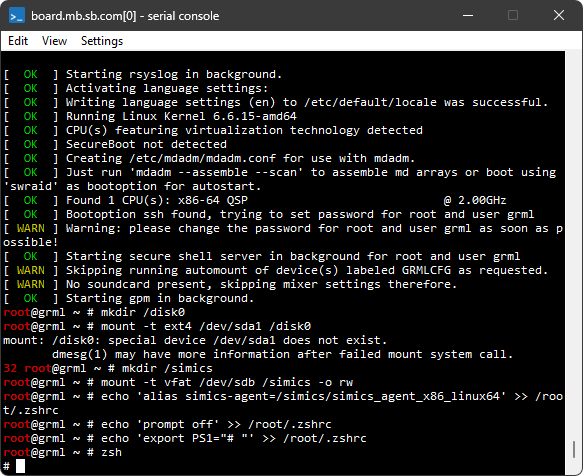The Intel Simics simulator allows saving the simulation state to disk, thus, the state of all target machines for later use. We call a saved state a checkpoint. Other simulators may refer to a saved state as a snapshot. In Simics a snapshot is also a saved state, but this only exists in-memory during a simulator session.
In this section:
- how to create a checkpoint
- how to restore the simulation state from a checkpoint
- links to further information about checkpoints
Creating a checkpoint:
-
launch the simulator and load the qsp-x86/firststeps target:
simics> load-target qsp-x86/firststeps
-
run the simulation until Linux is booted:
simics> run

-
stop simulation:
running> stop
simics>
-
create a checkpoint by running the write-configuration CLI command and specifying a destination where to store a checkpoint:
simics> write-configuration target-booted.ckpt
-
quit the simulator:
simics> quit
The target-booted.ckpt directory created on step 5 above contains saved simulation state.
Restoring from a checkpoint:
-
launch the simulator
-
restore the checkpoint state with the following command:
simics> read-configuration target-booted.ckpt

-
the simulation state from the target-booted.ckpt checkpoint has now been restored. We can see a text terminal window of the target machine with Linux prompt. We can resume simulation with the run command:
simics> run
running>
Useful information about checkpoints can be found in the documentation of the write-configuration and read-configuration commands (the documentation can be obtained from the CLI by running the help command like this: help write-configuration).
